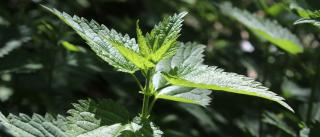

Seems their reputation could use an upgrade! “Weeds” are most often plants that have a great many appealing benefits you can actually savor around the dinner table!
Most quick-sprouting plants aren’t poisonous, quite the opposite actually!
Their leaves usually contain more nutrients than regular vegetables.
Also a source of protein, vitamins and minerals, with a surprisingly rich taste, they can enhance everyday meals.
Taste also ground elder, fleawort, white goosefoot, sow thistle, dandelion and black mustard!
Don’t forget plants that bear edible flowers to decorate mixed salads, like mallow.
Leaves are often cooked like spinach, in soups, baked dishes, quiches and pies.
Younger leaves are delicious in mixed salads.
 Lastly, a great many weeds boast medicinal properties and can be used both topically (external use) or ingested (internal use) to treat daily ailments.
Lastly, a great many weeds boast medicinal properties and can be used both topically (external use) or ingested (internal use) to treat daily ailments.
Correctly identifying the species is important and it’s important to refer to specialized books and experts.
Sometimes local government units, forestry departments and charities organize seminars to learn how to recognize plants: ask around you if you’ve heard of such opportunities.
The time when weeds had to fight out buckets of herbicides is long gone. Knowledgeable gardeners now aim for a peaceful coexistence with weeds. On bare ground, these act as free ground cover which protect, nourish and aerate the soil with their deep roots that furrow for nutrients.
In the vegetable patch, of course, weeds must be kept under control. It’s possible to pull them out and toss them in the compost when seedlings sprout so that they don’t compete with crops. However, once the crops have grown, they can live together to a certain extent, especially if they’re edible: harvesting them for food every now and then will control their expansion as well.
Laure Hamann